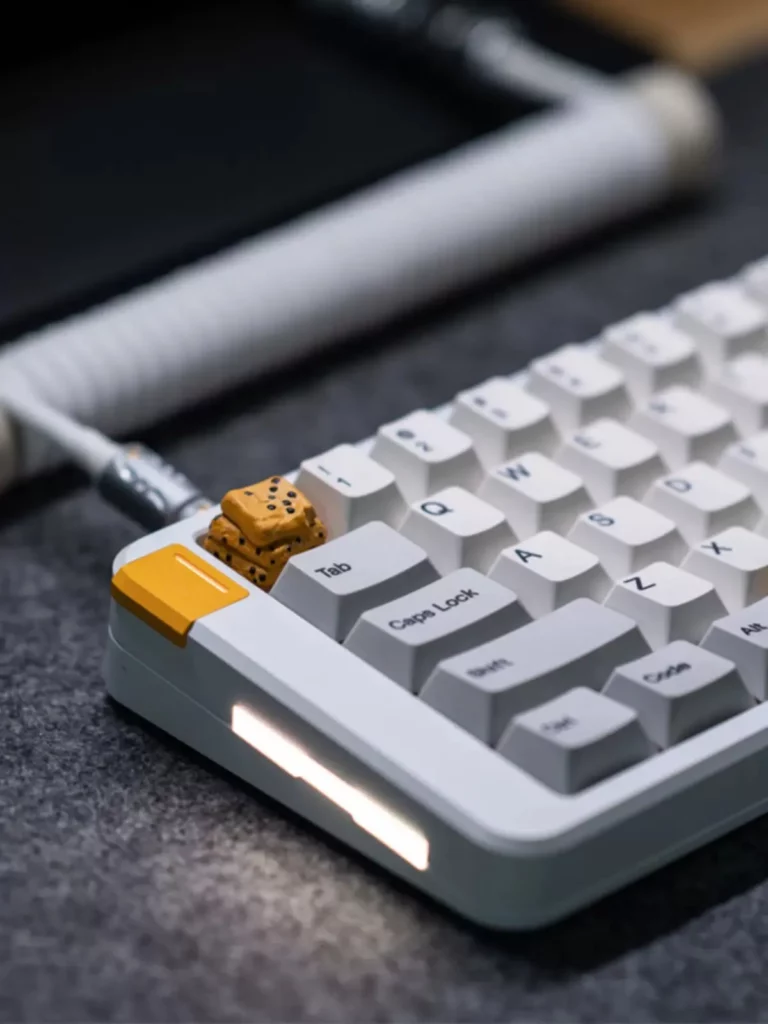In keyboard layouts, QWERTY has been our first choice since the days of clacking typewriters. But there’s a new layout called Dvorak, which claims to offer a more comfortable and quicker typing experience. As we all click-clack our way through daily tasks like writing emails or updating spreadsheets, it begs the question: is the familiar QWERTY setup really the best option? This article aims to explain the technical jargon and tell what sets these two keyboard titans apart. Whether you’re a typing pro or just starting out, we’ll help you figure out if it’s time for a switch.

Your Guide to Keys and Comfort
Simply put, keyboard layout is the arrangement of letters, numbers, and functions on your keyboard. It’s how you know where to find the ‘A’ or the ‘Enter’ key without looking. A good layout can affect how fast you type, how much strain you put on your fingers, and even how many mistakes you’re likely to make.
What Goes Into a Good Layout?
A well-thought-out keyboard layout should feel intuitive – your hands should naturally find the right keys. It should also aim to minimize finger movement and reduce errors, making for a smoother typing experience. Comfort is key, too, especially for those of us who type for hours at a stretch.
Keyboard Layout Usage: A Quick Look
QWERTY dominates mostly because it’s been around the longest, but Dvorak has a dedicated following as well. While QWERTY is practically ubiquitous, appearing on everything from laptops to smartphones, Dvorak supporters are passionate about their layout choice, often citing improved speed and ergonomics.
How Did QWERTY Become the Standard Keyboard Layout?
Birth of a Standard
The QWERTY keyboard, named after the first six letters in the top row, traces its roots back to the 1870s. It was created by newspaper editor and printer Christopher Latham Sholes and has since become the default layout for English-language keyboards. But its design wasn’t just random; it was engineered to prevent jams in early typewriters by spacing out commonly used letter pairings.
Advantages of Sticking with Tradition
QWERTY’s main advantage is its ubiquity. It’s the standard layout for most English-speaking countries, meaning that no matter where you go or what computer you use, you’ll likely be greeted by the familiar QWERTY layout. This makes it incredibly convenient and reduces the learning curve for new typists.
Where QWERTY Falls Short
However, critics argue that QWERTY isn’t designed for efficiency. Its layout requires more finger movement, which can lead to slower typing speeds and increased risk of repetitive strain injuries. Over time, this inefficiency has led some to seek alternative layouts that promise a more streamlined typing experience.
What Makes the Dvorak Layout a Contender for Efficient Typing?

A Different Approach to Typing
In the 1930s, Dr. August Dvorak set out to address the inefficiencies he saw in the QWERTY layout and designed what he hoped would be a faster, more ergonomic alternative. The Dvorak Simplified Keyboard (DSK) strategically places the most commonly used letters under the strongest fingers and reduces finger movement across the board.
The Perks of Going Dvorak
Proponents of Dvorak rave about its benefits: less finger motion, faster typing speeds, and reduced errors for many users. They argue that the layout reflects a more natural hand movement, which can lead to improved comfort during extended typing sessions and potentially a lower risk of strain-related injuries.
The Dvorak Challenge
Despite its claimed advantages, Dvorak has struggled to gain widespread adoption. The reasons range from the sheer dominance of QWERTY keyboards to the initial effort required to relearn typing on a new layout. Additionally, while some studies back up claims of Dvorak’s superior efficiency, others have found minimal differences, leading to debate within the typing community.
QWERTY vs. Dvorak Keyboard
| Feature | QWERTY | Dvorak |
| Typing Speed | Generally considered adequate for most users. | Claims to offer faster typing speeds after proficiency is gained. |
| Ergonomics | Less emphasis on ergonomics; finger movement is more extensive. | Designed to minimize finger movement and potentially reduce strain. |
| Learning Curve | Ubiquitous, requires no additional learning for new users. | Steeper learning curve due to less familiar layout. |
| Adoption & Availability | Standard layout found worldwide on almost all keyboards. | Limited adoption, not as readily available on hardware. |
| User Base | Majority of typists worldwide. | Smaller, dedicated group of enthusiasts and professionals. |
| Compatibility | Default layout across operating systems and devices. | Supported by most operating systems but may need to be manually selected. |
| Customization | Limited necessity for customization. | May require remapping keys or custom keycaps for physical keyboards. |
| Health Impact | Potentially higher risk of repetitive strain injuries due to layout. | Aimed at reducing the risk of repetitive strain injuries. |
| In Practice | Widespread use in education and industries. | Preferred by some niche fields and users for its ergonomic benefits. |
Personalization and Adaptability in Keyboard Use
- Tailoring the Typing Experience: Keyboards are a bridge between thought and text, and the right layout can feel like an extension of your hands. For some, this means sticking with the tried-and-tested QWERTY; for others, it’s about customizing their setup with Dvorak—or even other alternative layouts—to match their personal typing habits.And for those who want to take customization even further, exploring custom keycaps can add a unique and personal touch. However, it’s important to know that not all keyboards are compatible with custom keycaps,our another blog explores the compatibility factors to consider:Do All Keyboards Support Custom Keycaps?
- Embracing Adaptive Technologies: The digital age has ushered in adaptive technologies, from software that learns your typing patterns to keyboards that adjust to your ergonomics. These innovations offer new ways to personalize your typing beyond traditional layouts, potentially reducing discomfort and increasing speed.
- The Supportive Community Behind the Keys: Whether you’re considering Dvorak for its ergonomic benefits or just curious about changing your typing game, there’s a community out there to support you. Online forums and social media groups are rich resources for tips, encouragement, and shared experiences from both QWERTY and Dvorak users.
Make a Choice: QWERTY or Dvorak?

Assessing Your Typing Needs
The decision between QWERTY and Dvorak hinges on your unique typing habits, job requirements, and even your willingness to re-learn typing. If speed and ergonomics are your priority, and you’re up for a challenge, Dvorak might be worth exploring. On the other hand, if convenience, ubiquity, and immediate productivity are more critical, QWERTY would likely serve you best.
Practical Steps for Trial and Testing
Before making a switch, consider trying both layouts. Many operating systems allow you to change keyboard layouts digitally, so you can test-drive Dvorak without physical alterations. Pay attention to how each layout feels in terms of comfort, speed, and ease of learning.
The Decision-Making Checklist
To decide which keyboard layout is right for you, here’s a checklist to guide your thought process:
- Typing Speed: Are you seeking significant improvements in typing speed?
- Comfort: Are reducing finger strain and movement important factors to you?
- Learning Investment: Are you ready to invest time and effort into mastering a new layout?
- Compatibility: Do you often use different computers or devices that may not accommodate a Dvorak layout?
- Customization: Do you enjoy personalizing your tech to optimize performance?
QWERTY or Dvorak – Which Reigns Supreme?
The choice between QWERTY and Dvorak keyboards depends on personal preference, adaptability, and specific needs. QWERTY remains the go-to for its universal presence and ease of access, making it a comfortable choice for most users. Dvorak, although not as widespread, offers an alternative that may reduce finger strain and increase typing efficiency for those willing to climb its learning curve.For those seeking the ultimate in keyboard customization, building a mechanical keyboard offers unparalleled control over every aspect, from keycaps to switches. Learn more about this exciting world in our guide: How To Build A Custom Mechanical Keyboard – A Keycap-Centric Guide? Ultimately, it’s about weighing the immediate convenience of QWERTY against the potential long-term benefits of Dvorak. Whichever you choose, remember that comfort, speed, and efficiency in typing are not solely determined by the layout but also by how well it aligns with your typing practices and ergonomic needs.
